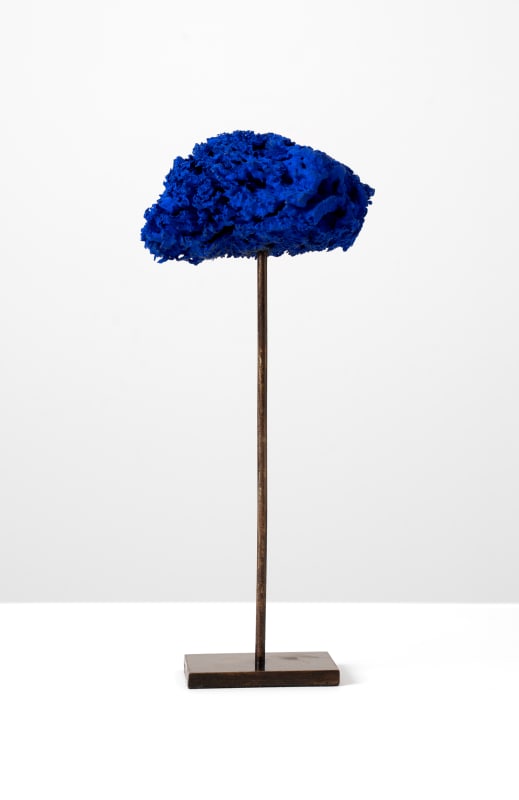Yves Klein, born in Nice in 1928 and dying in Paris in 1962, was a leading figure in the French post-war movement Nouveau Réalisme, a pioneer of performance art, and is perhaps best known for the paint colour he patented in 1960, International Klein Blue (IKB), an ultramarine blue that he felt unlocked the endless void of space. Best known for his iconic Monochromes, Klein initially worked in a range of colours, exhibiting his first paintings at the Club des Solitaires and Galerie Colette Allendy in Paris in 1955 and 1956 respectively. In 1957, he presented a landmark exhibition at Galleria Apollinaire in Milan, displaying eleven identical blue canvases – each rendered in what would become his signature hue.
Klein’s practice was radical and performative. He used the human body as a tool, staging Anthropometries in which nude female models were covered in pigment and pressed against canvas. He experimented with fire, wind, and water, burning and weathering his surfaces to capture ephemeral forces. Sponges, gold leaf, and vivid pigments featured throughout his work, transforming everyday materials into vehicles for spiritual expression.
During his lifetime, Klein was the subject of a retrospective at Museum Haus Lange in Krefeld, exhibited at Leo Castelli Gallery in New York, and was commissioned to create a series of monumental murals for the Gelsenkirchen Opera House in Germany. His work is held in major international public collections, including the Philadelphia Museum of Art; the Museum of Modern Art (MoMA), New York; Tate Modern, London; and the Centre Pompidou, Paris.

